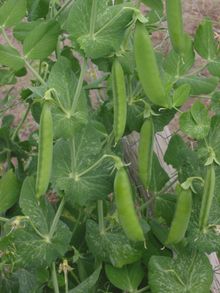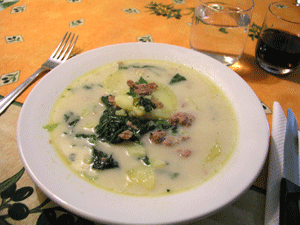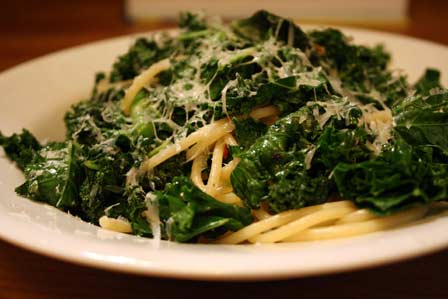To make pizzas throughout the year you need to plan during the vegetable season. Make up some batches of spaghetti sauce, and blanch, chop/slice, and freeze some veggies in small portions. Or you can get crazy and make tons of pizzas up in one day and freeze them in gallon bags for frozen pizzas ready to bake.
 |
| Blurry, but this one day's harvest is enough tomatoes to make a whole batch of sauce. |
Garden topping options include:
-spinach
-kale
-tomatoes
-mushrooms (trade with your neighbor who grows shiitakes in a closet)
-sweet peppers
-jalapenos or other spicy peppers
-onions
-fresh basil
-fresh herbs in general
-artichoke
-garlic
-zucchini
I wouldn't necessarily build a pizza with all of these toppings, but you could pick 3 or 4 for each pizza you make. Some ideas: artichoke, zucchini, mushroom, and chicken with pesto sauce; mozzarella, kale, tomato, fresh basil on tomato sauce; barbecue sauce, jalapeno, sweet pepper, onion, hot Italian sausage. That one's for the spicy fans.
Not all veggies work out well for toppings, the ones that don't you save for your sauce. While pizza sauce is primarily tomatoes, it won't hurt it to work in some other veggies to give it character and nutrition. Basil, oregano, onion, garlic, tomatoes, mushrooms, and bell peppers (any color) are pretty much expected to be in a good spaghetti or pizza sauce. Some you might not think of though are: eggplant, this mild flavored vegetable thickens sauces and is decidedly an acceptable addition to many Italian foods; carrots/sweet potatoes, these orange veggies add beta carotene and can help to sweeten a too-acid sauce without adding sugar, they also won't change the color of your sauce noticeably; summer squash, my stepmom believes these belong in everything, cooked into tomato sauces they add nutrition without making a drastic change in flavor; kale/spinach/chard, unlike some greens, these have decent cooked properties, they are full of nutrition and pizza may be your only chance to get your kids to eat them (use sparingly to avoid the obvious color change).
Pizza crust is easy, any bread machine comes with some kind of pizza crust recipe, or you can pick up a Boboli or refrigerated tube of crust. I prefer to make my own in the bread maker or by hand from scratch. Recipes are all over the internet for pizza crust, just pick one and give it a shot.
Sauce recipes are much more challenging. You have a few options in sauce, you can do home canned pizza sauce, or a spicy version of home canned, or a pesto sauce, or a white (alfredo) sauce. If your goal is to use up your garden produce choose one of the first three. If your goal is to keep the nutrition content high and fat and calorie content low for your pizzas, also choose one of the first three. Alfredo sauce has it's place, but on top of a pile of empty calories, topped with a pile of saturated fat... it probably isn't worth it. It would be delicious over homemade whole wheat linguine with fresh spring vegetables though! I am a foodie, but I am not a chef. Sadly my mouth's idea of delicious and my hand's ability to cook often end up on separate sides of a cookbook. So we keep it simple around here.
To make a basic tomato sauce:
Get together enough tomatoes to fill a glass baking dish about 8x11, use primarily saucing tomatoes. Saucing tomatoes are meatier than slicers or cherries, they tend to have smaller seed pockets and less juice to them. Heat a small pan of water to boiling, with a slotted spoon dip each tomato in the boiling water for a few seconds then drop in a bowl of cold water. This is totally a two person job and having a helper makes it go much faster. Once each tomato has cooled you can easily cut off the stem and core, then slip the skin off the tomato. Chop each tomato into large chunks and toss into the roasting pan. Don't worry about all the juice and seeds on the cutting board, in fact squeeze the juice out of some of the bigger tomatoes before chopping. All of the juice and seeds will just make it take longer to thicken your sauce. If you want to add red pepper to your sauce it's a good idea to core and quickly chop them as well to roast with the tomatoes. Set your oven to about 350F, roast the tomatoes for an hour or so. When they are done they will be tender and have developed that fabulous roasted vegetable smell. Nearly all of the vegetables can be roasted like this before being added to a saucepan for simmering, I don't recommend it for greens, mushrooms or herbs though.
When the pan of tomatoes is roasted, pour off some of the liquid at the bottom of the pan. Chop some onion and garlic. Get a large stock pot or 6-8 quart pot and heat a few tablespoons of olive oil in it. Sweat the garlic and onion in oil until it is soft, and gently browned. Taking the time to do this will give these aromatics a sweeter flavor. Pour in your roasted tomatoes, roasted red peppers, and any other veggies. Give this mix a quick twirl with a stick blender (or blend briefly in a regular blender before adding to the pot). Cover and let simmer about 20 minutes.
 |
| Homemade spaghetti sauce on the stove |
After the 20 minutes is up, blend to a nice smooth puree. Your sauce still won't have much flavor, but it should smell great. Add in dried herbs: bay leaves, Italian seasoning, and salt (lots of salt!). Remember this is a big batch of sauce so add quite a bit of seasoning to give it the flavor you want. Allow the sauce to simmer for another 10 minutes, then taste and add more seasoning as needed. Lastly, add about a cup of red wine (capestrano, zinfandel, or anything that isn't sweet is fine), and throw in some fresh basil. If your sauce still tastes too acidic, add a couple tablespoons of sugar. Uncover and turn the heat down to a low simmer, let the sauce cook down to the desired consistency. Double check that it tastes right and salt, sugar or season until the flavor is right. Remove the bay leaves. This sauce is pretty basic and can be jazzed up when you are ready to use it for lasagnas, spaghetti, pizza, or in a meat ragu or whatever other recipe you have. Italian seasonings can be skipped over also to make an even more adaptable tomato sauce.
You are then able to can your tomato sauce using a water bath method, but be sure to add a tablespoon of lemon juice to the bottom of each pint jar to ensure the acidity and prevent botulism.** Or you can scoop the sauce into freezer safe containers the appropriate size for one meal and freeze up to a year.
**Disclaimer: AnywhereEden shall not be responsible for any illness or loss due to home canning and preserving. If you plan to do home canning get the Ball Complete Book of Home Preserving for full instructions on safe home preserving. I am not a pro at canning, please be advised that tomatoes border on low acid and it is always safer to pressure can or freeze them. Adding acid will help prevent botulism but is never a guarantee, and always follow canning safety measures. Keep jars, lids, and rings clean; throw away any jars with broken seals, visible mold, bulging lids, or strange smells. If it doesn't look right... throw it away! Don't take the risk of eating spoiled foods. Learn about botulism here.
 |
| Save some time and freeze sauce in meal-sized containers. |
Pesto is an easy sauce to make, it's delicious and recipes for basil pesto can be adapted to make other herb pestos, if you've made pesto in the past and been saddened to see it oxidize (turn brown), you can prevent this by adding some lemon juice to the pesto and also by not allowing it to get too hot. Tossing fresh pesto into hot pasta is guaranteed to make it change color, instead let the pasta cool a bit before adding the pesto and it shouldn't brown as much. Some grocery stores' canning aisles carry oxidation prevention agents that may work to improve this but I have never tried one so can't advise regarding their effectiveness.
2 cups firmly packed fresh basil leaves
3/4 cup grated Parmesan cheese
3/4 cup olive or vegetable oil
3 cloves garlic
1/4 cup pine nuts
1 Tbsp. lemon juice
1. In blender or food processor, place all ingredients.
2. Cover; blend on medium speed about 3 minutes, stopping occasionally to scrape sides, until smooth.
3. Spoon into 8 oz. or smaller freezer containers and freeze up to one year.
After a long day of making sauce, the perfect way to end your day is to throw together your pizza crusts, toppings, and sauce into a garden pizza feast.
Enjoy!




















